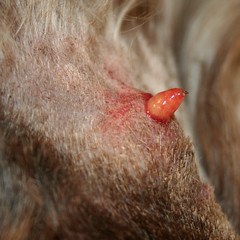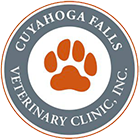While keeping up with the business end of our blog, we found a number of questions that were specifically Googled, and we thought it would be a good idea to address them specifically here in a blog post. Part One was published recently, and now it’s time for Part Two of Frequently Googled Questions…
Q. Is oral heartworm preventive as good as ProHeart 6?
A. Great question! If the goal is heartworm preventive, then yes, both ProHeart 6 and the various oral heartworm preventives have been approved by the FDA.
When it comes to the intestinal parasite control angle of heartworm preventive, it is important to look at the label claims, and also look at the active ingredients. ProHeart 6 has a label claim for only heartworm prevention and treatment of hookworms. But when we put our thinking caps on, we can see that the active ingredient in ProHeart 6 is moxidectin, and in other products containing moxidectin, efficacy against roundworms and whipworms has been clearly demonstrated.
Counting on ProHeart 6 to address these off-label parasites is just that, off-label. The off-label use of treatments is not unusual on the human side or the veterinary side of medicine. We have good reason at this point in time to believe that ProHeart 6 will provide good protection against these other parasites. As data is collected over time, we will either grow more confident in our assessment, or we will make other necessary reccomendations for our patients. Right now, we are happy with ProHeart 6. In any event, routine examinations of fecal samples should be made on all dogs no matter the choice of heartworm preventive.
Q. Is Sentinel® or Trifexis® better for puppies?
A. How old is the puppy, how much does the puppy weight, and does the puppy have fleas? Those are the only factors that would separate one from the other when it comes to use in puppies.
Sentinel® is approved for use in puppies as small as two pounds and as young as four weeks of age. And it is very good at what it is supposed to do: prevent heartworm disease, control intestinal parasites, and prevent fleas from maturing. Trifexis® is approved for puppies as small as five pounds and for puppies as young as eight weeks of age. And it is very good at what it is supposed to do: prevent heartworm disease, control intestinal parasites, and kill fleas.
If the puppy has fleas, and meets the age and size criteria of Trifexis®, the puppy will thank you for using Trifexis®.
Q. What do pinched nostrils look like in a Shih Tsu?
|
A. The flat-faced dogs are called brachycephalics, and brachycephalic syndrome is a grouping of anatomic features that make breathing difficult for them. Shih Tsus, Boston Terriers, Pugs, Lhasa Apsos, French Bulldogs, Pekingeses, and English Bulldogs are all examples of brachycephalic breeds.
One of these features of brachycephalic syndrome is termed “stenotic nares,” a.k.a. pinched nostrils. When a dog has stenotic nares, inhaling oxygen through the nose is a difficult process. Consider breathing through a coffee straw!
Stenotic nares are surgically correctable, and the difference in the dog’s ability to breathe is dramatic.
|
Q. What does a warble look like?
A. Warbles are the larval form of the Cuterebra fly. Read more about warbles and how they affect our companion animals. And after the beautiful weekend we’ve had that makes mid-March look like late-June, the parasites are going to be out in a big way.
Stay tuned for another edition of Frequently Googled Questions! And if you’ve got any questions about your pet, don’t hesitate to call us here at the Cuyahoga Falls Veterinary Clinic at 330-929-3223.




The Cuyahoga Falls Veterinary Clinic | Animal Wellness | Medical Services | Pet Services
[…] of Frequently Googled Questions! In case you missed them, here are the links for the First and Second episodes. Before we officially get started with #3, though, I want to make a comment about Dr. […]